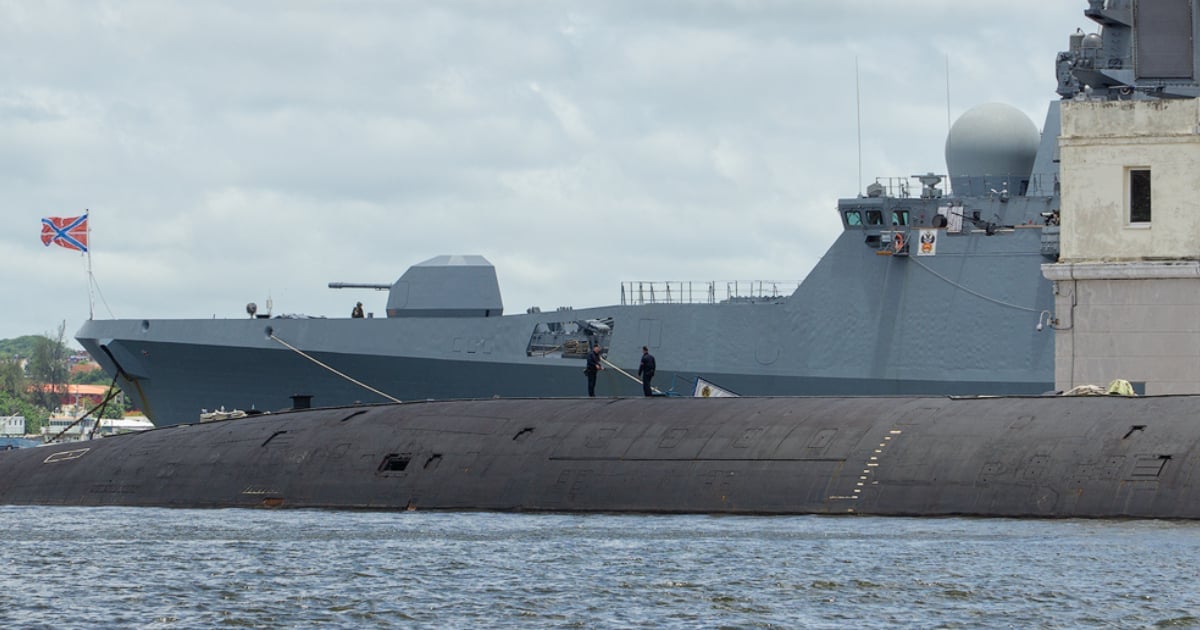
After its stay in the bay of Havana, the Russian frigate Admiral Gorshkov carried out various maneuvers in the Atlantic Ocean with the purpose of detecting submarines, as reported in a statement from the Russian Ministry of Defense.
Spread through the social network Telegram and reported by the Reuters agency, the document details that the exercise involved piloting a reconnaissance helicopter to carry out "search and tracking tactics" more than 50 kilometers (31 miles) from the ship.
The aircraft made five landings on the frigate's deck, the same one that docked at the port of the capital of Cuba on June 12th, alongside the nuclear-powered submarine Kazan, after conducting an exercise involving "high-precision missile weapons" in the Atlantic.
Since the beginning of the month, the naval squadron of the Northern Fleet of the Russian Navy has been practicing the use of high-precision missiles through computer simulation and training to repel air attacks. These maneuvers have been monitored by the United States, as it was close to the shores of Miami, Florida.
Wrapped in a cloud of controversy, the stay of the Russian Navy flotilla in Cuba took place for five days, and it was composed of the oil tanker Pashin, the salvage tug Nikolai Chiker (SB-131), and the frigate Admiral Gorshkov.
At that moment, the Cuban Ministry of Foreign Affairs pointed out that the visit was carried out in line "with the historical friendship relations between Cuba and the Russian Federation," and that it strictly adhered to "the international regulations of which Cuba is a State party."
Similarly, he pointed out the non-existence of nuclear weapons on the ships and stated that their stop in the country did not pose a threat to the region, although their presence led to the deployment of several warships and a submarine reconnaissance plane by the United States government to track the course of the flotilla.
What do you think?
COMMENTFiled under: